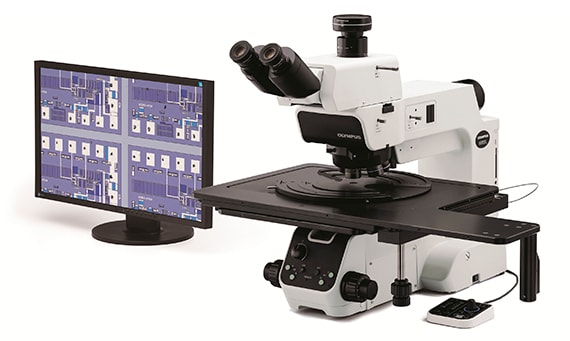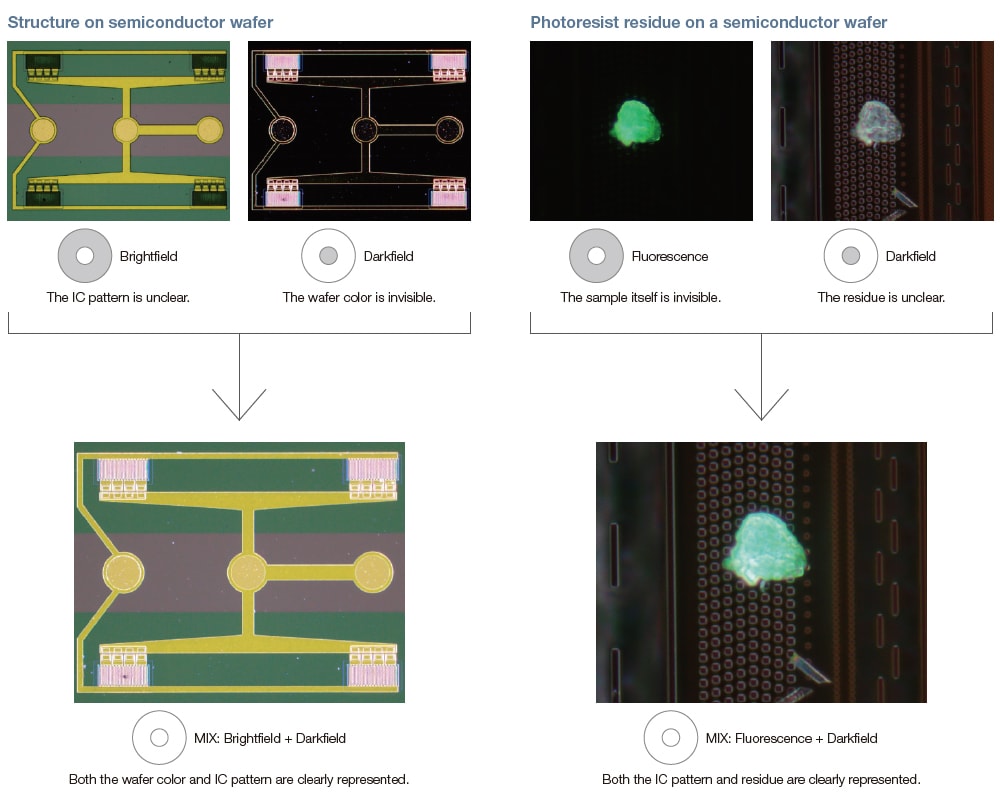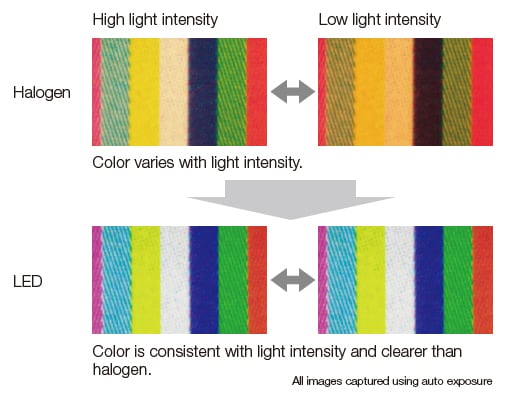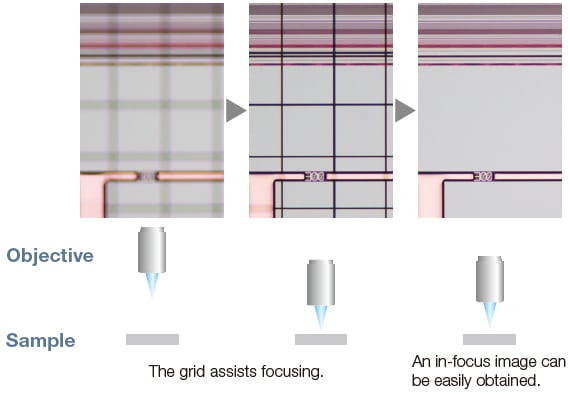New MIX Observation Feature Detects Previously Hard-to-Find Defects Launch of MX63/MX63L Semiconductor/FPD/Industrial Inspection Microscopes
July 27, 2017

Olympus Corporation (President: Hiroyuki Sasa) today announced the worldwide launch by its Scientific Solutions business from 27 June, 2017 of the new MX63 and MX63L industrial microscopes for inspection of semiconductors and flat panel displays (FPDs).
Industrial microscopes are used to view and inspect a wide variety of industrial products and associated parts. To provide the best possible solutions to diverse customer needs, Olympus supplies a variety of industrial microscope systems that incorporate image analysis software together with numerous different units that feature excellent optics performance.
The new MX63 and MX63L industrial microscopes have been designed for the inspection of large samples, especially semiconductors and FPDs. The MX63 can be used with wafer diameters up to 200mm and the MX63L with diameters up to 300mm. Moreover, as the first models in the MX series to be fitted with units that support MIX observation1, the capabilities of the new microscopes include detecting defects that were difficult to find using past observation techniques. They also feature a high-intensity white LED light source that not only provides low power consumption and long life, but also maintains image stability such that changes to the light source brightness during viewing do not affect the image coloring. Use of the new focus aid feature, meanwhile, ensures that the user can keep track of focusing and avoids colliding with the sample.
Launch Overview
| Name | Launch Date |
|---|---|
| MX63/MX63L Semiconductor/FPD/Industrial Inspection Microscopes |
June 27, 2017 |
Main Features
- New units featuring MIX observation for detecting defects that were difficult to find using past observation techniques.
- Use of an LED light source maintains reliable observation performance over the long term without being affected by light source brightness.
- New focus aid feature keeps track of focusing and avoids colliding with the sample.
Details of Main Features
1. New units featuring MIX observation for detecting defects that were difficult to find using past observation techniques.
The new models are the first in the MX series to be fitted with units that support MIX observation. MIX observation is a new observation technique that combines brightfield observation (suitable for observing large regions of the sample, including color information), fluorescence observation (for detecting fluorescent material), and darkfield observation (ideal for identifying defects or other fine structures), and takes advantage of their respective benefits. It can detect defects that were difficult to find using past observation techniques. Moreover, darkfield observation has its own dedicated illumination that offers a choice of four different lighting directions to better highlight the object being viewed.

2. Use of an LED light source maintains reliable observation performance over the long term without being affected by light source brightness.
High-intensity white LEDs are used as the light sources for both reflected 2 and transmitted 3 light. Along with the low power consumption and long life that are features of LEDs, this also maintains image stability such that changes to the light source brightness during viewing do not affect the image coloring.

3. New focus aid feature keeps track of focusing and avoids colliding with the sample.
The microscope is focused on the sample by focusing on a grid pattern displayed in the field of view. This feature is particularly useful for samples that lack a pattern, such as bare wafers, glass, or film, and it prevents the objective lens from accidentally colliding with the sample.

Main Specifications of MX63/MX63L
| Observation techniques | Brightfield, darkfield, MIX, polarization, differential interference, fluorescence, IR |
|---|---|
| Optics | UIS2 optics |
| Light source for both reflected and transmitted light | LED |
| Stage(Maximum) | MX63: 210x210mm/MX63L: 356x305mm |
| Weight | MX63: 50kg/MX63L: 64kg (approx.) |
1 A new observation technique that combines brightfield observation (suitable for observing large regions of a sample, including color information), fluorescence observation (for detecting fluorescent material), and darkfield observation (ideal for identifying defects or other fine structures), and takes advantage of their respective benefits.
2 Illumination is provided from the same side as the objective lens. Mainly used for opaque samples.
3 Illumination is provided from the below the sample. Mainly used for samples that are highly transparent. Also used with low-transparency samples to view outlines only.
Olympus's Scientific Solutions Business
Its main products are optical microscopes and industrial videoscopes and non-destructive testing equipment. Through these products, the Scientific Solutions Business helps to keep the infrastructure of society safe and secure, including research and development in the medical, life science, and industrial fields; quality improvement at production facilities; and inspections of aircraft and other large plant, etc.
For more information
Press releases are company announcements that are directed at the news media.
Information posted on this site is current and accurate only at the time of their original publication date, and may now be outdated or inaccurate.

